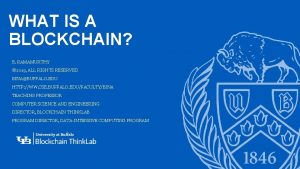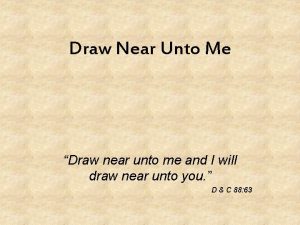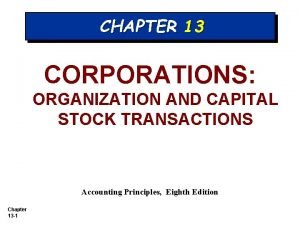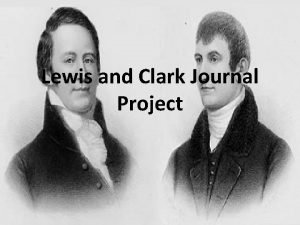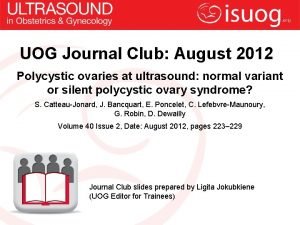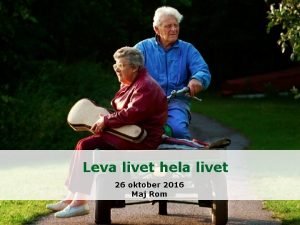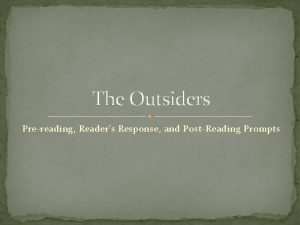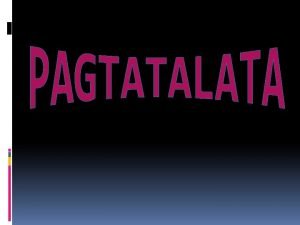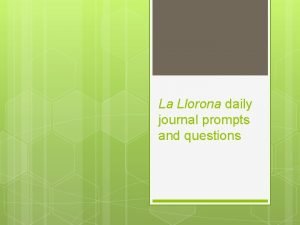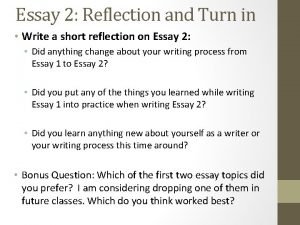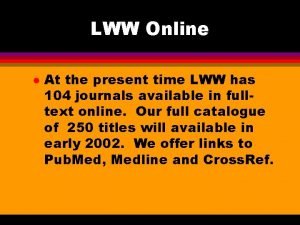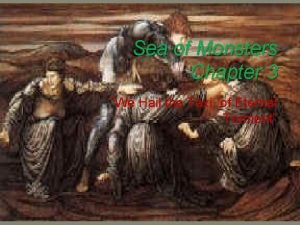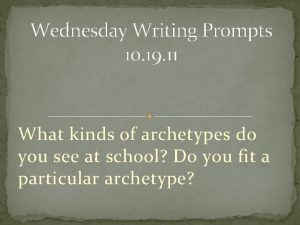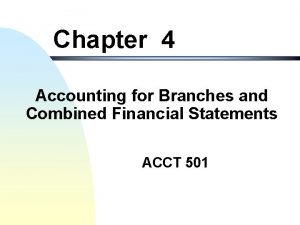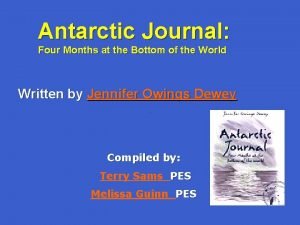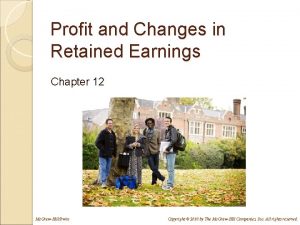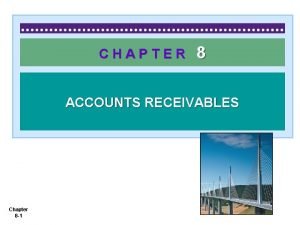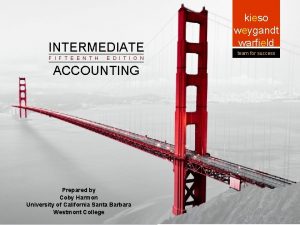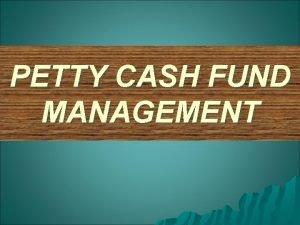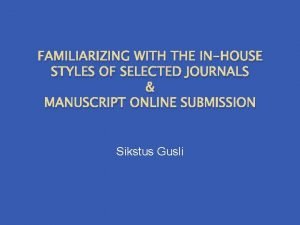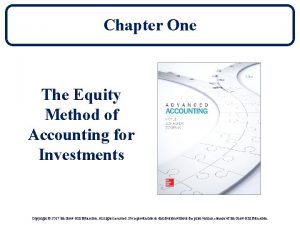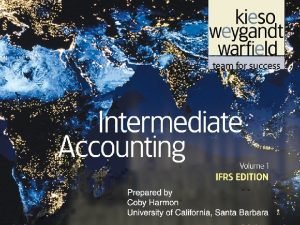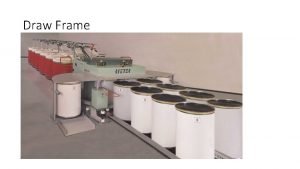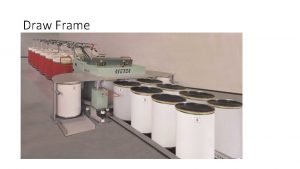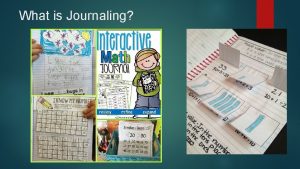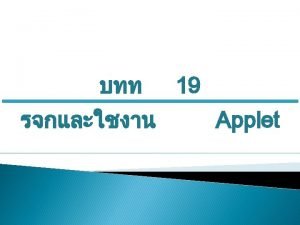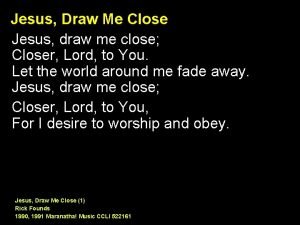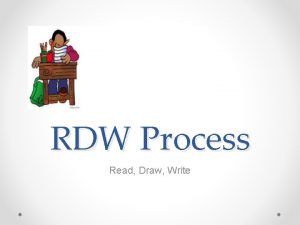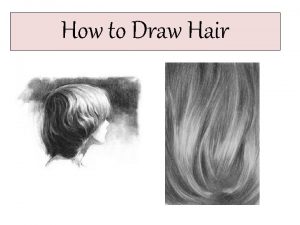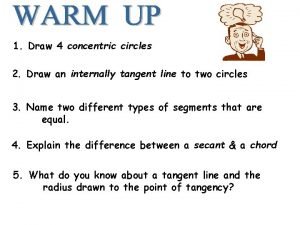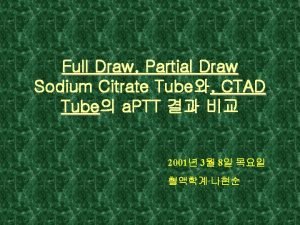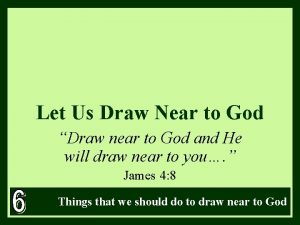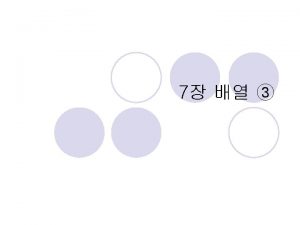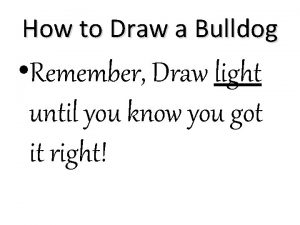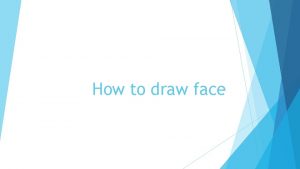Journal 11 17 09 1 Draw a 4

























- Slides: 25

Journal 11 -17 -09 1. Draw a 4 x 4 square on your paper. You should have 16 squares in total. 2. Using your Spectrum book and the information on the board fill each square with a vocabulary word. Not all vocabulary words will be highlighted. They maybe italicized. There at least three words on the board to get you started.

Chapter 11 • Mechanical wave(page 357) Examples Sound Wave Air (medium) Seismic Wave Earth (medium) Pond, ocean, sea, river Wave Water (medium) • Medium The material a wave travels through

Chapter 11 • Electromagnetic Wave(page 357) Wave doesn’t travel through a medium Examples Light Radio • Transverse Wave (page 363) A mechanical wave has particles that move perpendicular through a medium as the wave passes – like a light wave • Longitudinal Wave or Compression Wave(page 363) A mechanical waves that causes particles to vibrate parallel to the direction of wave motion – like a sound wave

Chapter 11 • Surface Wave (page 364) A wave that occurs at the boundary between 2 different mediums, such as between water and air. Examples Ocean waves Surface seismic waves

Journal – 11/19/09 Compare and Contrast a longitudinal and transverse wave. If you need to look it up, go to page 363 in your yellow Science Spectrum book. Be sure you write the difference in your own words.

Chapter 11 – Quiz over Vocabulary 1. _____ 2. Transverse 3. _____ 4. _____ Wave doesn’t travel through a medium __________________________ _ Waves that cause particles to vibrate parallel to the motion of the wave. Any material that a wave travels through.

Chapter 11 – Quiz over Vocabulary 5. _____ A type of motion in which the wave fades. Sound, seismic, and water 6. _____ are examples of this kind of wave. 7. Simple Harmonic __________________________. Motion 8. _____ The ability to do work.

Quiz Answers #1 – Electromagnetic Wave #2 - A wave in which the particles travel perpendicular to the wave. #3 – Longitudinal #4 – Medium #5 – Damped Harmonic Motion #6 – Mechanical Wave #7 – A wave that continues forever. #8 – Energy #9 – trough #10 – crest

Chapter 11 – Quiz over Vocabulary For questions 9 and 10 use the picture to identify the parts of the wave. #9 - Identify the dip of the 9. _____ 10. _____ wave. Ignore the labels and arrows. #10 - Identify the rise of the wave. Ignore the labels and arrows.

Focused 2 -minute free write Write everything you can about waves. If you get stuck on an idea or can’t think of something, write the last sentence you wrote over and over until a new thought comes to you. Turn your paper in.

Journal – December 7, 2009 Draw and label 2 types of waves. Compare and contrast period and frequency. (refer to page 367)

Parts of Waves Parts of a Transverse wave. Crest Trough http: //www. antonine-education. co. uk/New_items/MUS/images/Making 6. gif

Chapter 11 • oscillates A change in position that resembles an up and down motion. • Trough The low portion of a wave • Crest The high portion of a wave

Parts of a Wave continued. Parts of a Longitudinal or Compression Wave http: //www. gcsescience. com/Longitudinal-Wave. gif

Chapter 11. 2 Wavelength (pg 366) • The distance from one crest of a wave to the next crest or trough to trough or compression to compression. Period (pg 367 – figure 11 -11) • The time required for one full wavelength of a wave to pass a certain point and the time required for one complete vibration of a particle in a medium.

Chapter 11. 2 Frequency (pg 367) Frequency. Period Equation(pg 367) Wave Speed (pg 369) • The number of full wavelengths that pass a point in a given time. • The frequency is the inverse of a period. • How fast a wave moves. Calculate it by dividing the wavelength by distance of one wavelength (period) or wavelength times its frequency

Practice calculating wave speed Page 370 – Math Skills Piano – mid C vibrates at a frequency of 264 Hz _ sound waves produced have a wavelength in the air of 1. 30 m. What is the speed of sound in air? V(velocity) = frequency times wavelength 264 Hz x 1. 30 m = 343 m/s (In the book they converted Hz to seconds. )

Chapter 11. 2 What affects wave speed (pg 370 -371) • Sound Waves - type of medium, the arrangement of particles in a medium (states of matter) • Light Waves – doesn’t need a medium to travel through • When it does travel through a medium like air or water it slows down. •

Chapter 11. 2 Doppler Effect(pg 372373) • Pitch is determined by the frequency at which sound waves strike the eardrum in your ear. • The doppler effect then is an observed change in the frequency of a wave when the sound source or the observer moves.

Journal – December 12/8/09 Explain Constructive and Destructive Interference. Page 376 – 377. Describe standing waves. Page 379

Chapter 11. 3 – Wave Interactions Reflection (page 374) The bouncing back of a wave when it meets a surface or boundary. Diffraction (page 375) The bending of waves around a barrier or an edge.

Chapter 11. 3 – Wave Interactions Refraction (page 376) The bouncing back of a wave when it meets a surface or boundary. Diffraction (page 375) The bending of waves around a barrier or an edge.

Chapter 11. 3 – Wave Interactions Reflection (page 374) http: //www. rkm. com. au/ANIMATIONS/animationgraphics/prism-dispersing-light. jpg Constructive Interference (pg 377) The bouncing back of a wave when it meets a surface or boundary. Constructive Interference occurs when 2 waves line up and crests overlap making a larger wave. dev. physicslab. org

Chapter 11. 3 – Wave Interactions Destructive Any interference in which waves Interference combine so that the new wave is Reflection (page 377) smaller than the original waves. .

Chapter 11. 3 – Wave Interactions Standing Wave A wave formed by interference that (page 379 -380) appears not to move – speed amplitude and frequency are the same.
 How to draw use case diagram in draw.io
How to draw use case diagram in draw.io Draw near unto me and i will draw unto you
Draw near unto me and i will draw unto you Capital stock
Capital stock Lewis and clark journal project
Lewis and clark journal project Normal ovary size in mm
Normal ovary size in mm Leva interfissa
Leva interfissa Reader response journal prompts
Reader response journal prompts Anekdota tungkol sa sarili
Anekdota tungkol sa sarili Fahrenheit 451 journal prompts
Fahrenheit 451 journal prompts Journal du nombre ce1
Journal du nombre ce1 Examples reflection
Examples reflection Ovid lww ppv journal
Ovid lww ppv journal Sea of monsters chapter 4 summary
Sea of monsters chapter 4 summary Wednesday journal prompts
Wednesday journal prompts Accounting branches
Accounting branches Antarctic journal four months at the bottom of the world
Antarctic journal four months at the bottom of the world Lab reflection example
Lab reflection example Examples of okonkwo's heroic behavior
Examples of okonkwo's heroic behavior Small stock dividend journal entry
Small stock dividend journal entry Asia pacific journal of clinical oncology
Asia pacific journal of clinical oncology Accounts receivable journal entry
Accounts receivable journal entry Balance sheet accrued expenses
Balance sheet accrued expenses Fluctuating petty cash system
Fluctuating petty cash system Inhouse journal
Inhouse journal Equity method accounting journal entries
Equity method accounting journal entries Chapter 13 current liabilities and contingencies pdf
Chapter 13 current liabilities and contingencies pdf
